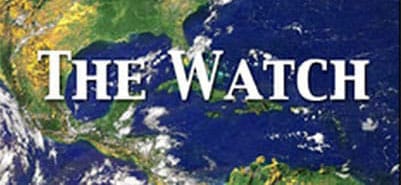Flying Into the the Storm! NOAA Hurricane Hunters
During the typical Atlantic hurricane season from June 1 to November 30, NOAA aircraft collect crucial observations to improve the understanding and prediction of these massive cyclonic storms. Scientists at NOAA’s Hurricane Research Division in Miami Florida, fly into the heart of powerful storms to try and answer hypotheses prevalent in hurricane research, and support real-time weather prediction models essential in providing up-to-date information on storms threatening to make landfall. Each mission uses a variety of instruments that collect atmospheric and oceanic data that are largely unobserved with existing ground, ocean and satellite based technologies. Kelly will describe the process and importance of these missions in the context of scientific understanding and impact to the broader public.

At the time of this presentation Kelly Ryan-Poterjoy was a Senior Research Associate at the Hurricane Research Division in NOAA’s Atlantic Oceanographic and Meteorological Laboratory in Miami, Florida. Kelly’s responsibilities ranged from operational and fundamental research to field work and public outreach. She actively participated in the annual Hurricane Field Program including developing and implementing observing experiments, preparing for deployments into tropical cyclones, and operating aircraft instruments in the field. She specialized in Coyote Unmanned Aircraft Systems and airborne Doppler Wind lidar measurements, and processing real-time dropsonde and radar observations. Her primary research interests included refining aircraft reconnaissance methods for tropical cyclones, hurricane boundary layer and cloud physics model verification, satellite and radar remote sensing techniques, and the evolution of tropical cyclone structure related to size and intensity changes. Kelly received her Bachelor of Science degree in Physics and her Master of Science degree in Atmospheric Science from the University of Arizona where she focused on atmospheric dynamics and tropical cyclones.
Education
Webinar Archives Education ResourcesStewardship
Supporting Stewardship Past Projects Focus Area Resources Applying for Funding
Search Education
Get Social
Last updated: 06/16/24
Author: NOAA
How to cite this article
